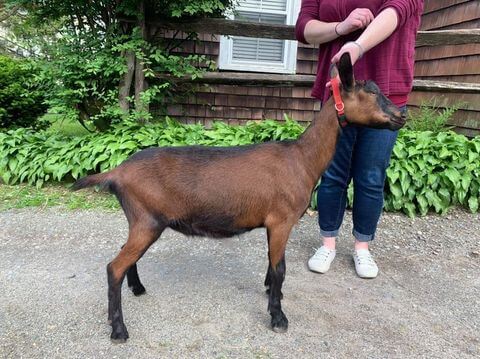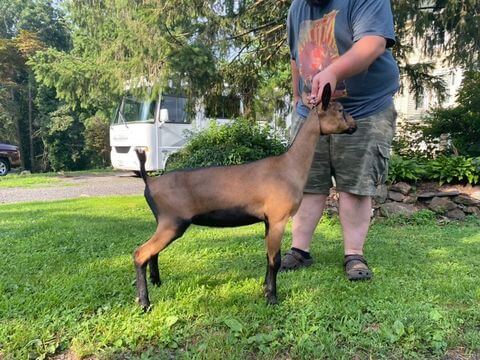danielle2003
Songster
Hi, I've been a member for awhile now, but haven't posted a lot lately. I recently moved from Arizona to Oklahoma...like 2 months ago. I posted mainly on chickens of course, but sadly had to sell them because of the move  . I saw this category for other livestock and thought I would ask here:
. I saw this category for other livestock and thought I would ask here:
So, I am wanting to buy a Nubian doeling that will have good udder structure. It doesn't need to look perfect, but pretty good.
I read it's always good to look at the dam's udder first. I found this Doe and she had a pretty bad udder....not good attachments at all, and her teats were at her hocks. Here's a picture.
The red circles are where the attachments start, which I think are way too high. Her udder sags quite a bit:

Then I found another Nubian Doe, which to me looks a lot better, but I don't know a lot about goat conformation.
This is from her first kidding:

This is after her second kidding:

So, I want to know what you all think. Does it look like a good udder to you? Would her doelings be worth buying? Thank you in advance!
So, I am wanting to buy a Nubian doeling that will have good udder structure. It doesn't need to look perfect, but pretty good.
I read it's always good to look at the dam's udder first. I found this Doe and she had a pretty bad udder....not good attachments at all, and her teats were at her hocks. Here's a picture.
The red circles are where the attachments start, which I think are way too high. Her udder sags quite a bit:
Then I found another Nubian Doe, which to me looks a lot better, but I don't know a lot about goat conformation.
This is from her first kidding:
This is after her second kidding:
So, I want to know what you all think. Does it look like a good udder to you? Would her doelings be worth buying? Thank you in advance!



